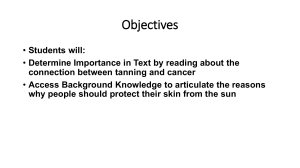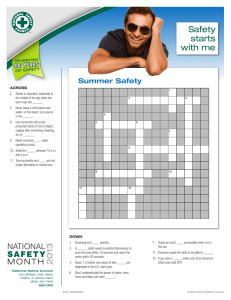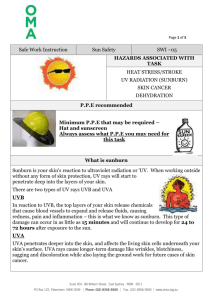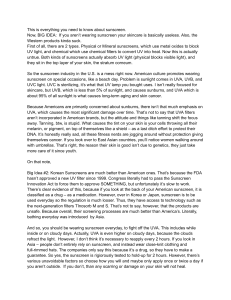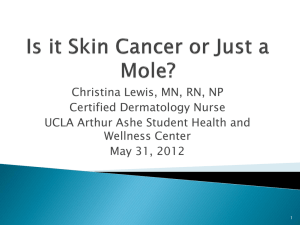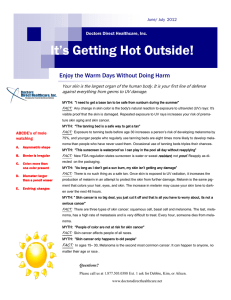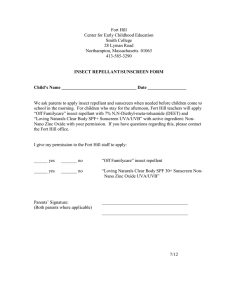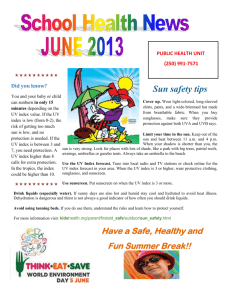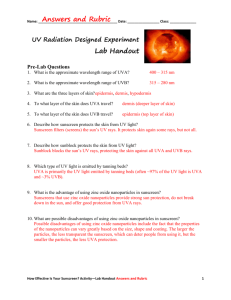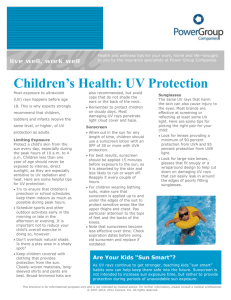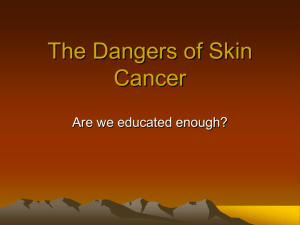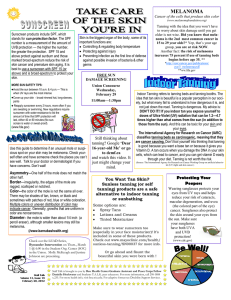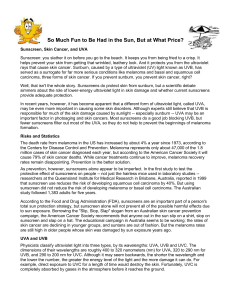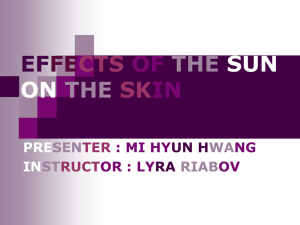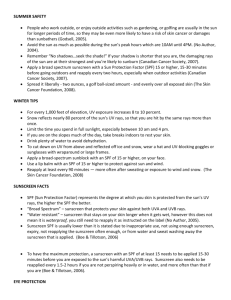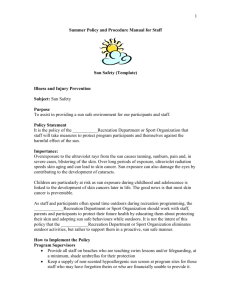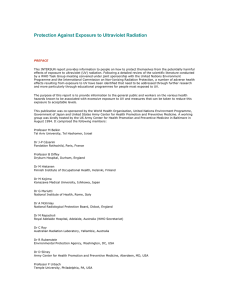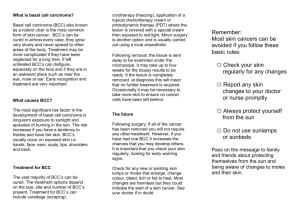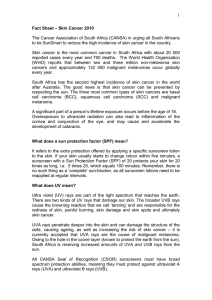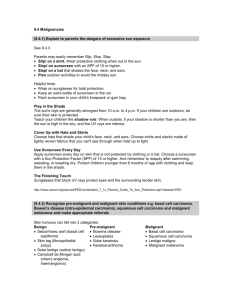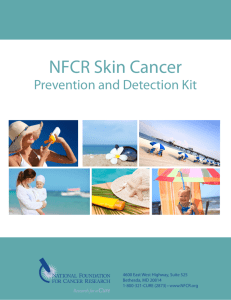Skin cancer: Tips for preventing and finding
advertisement
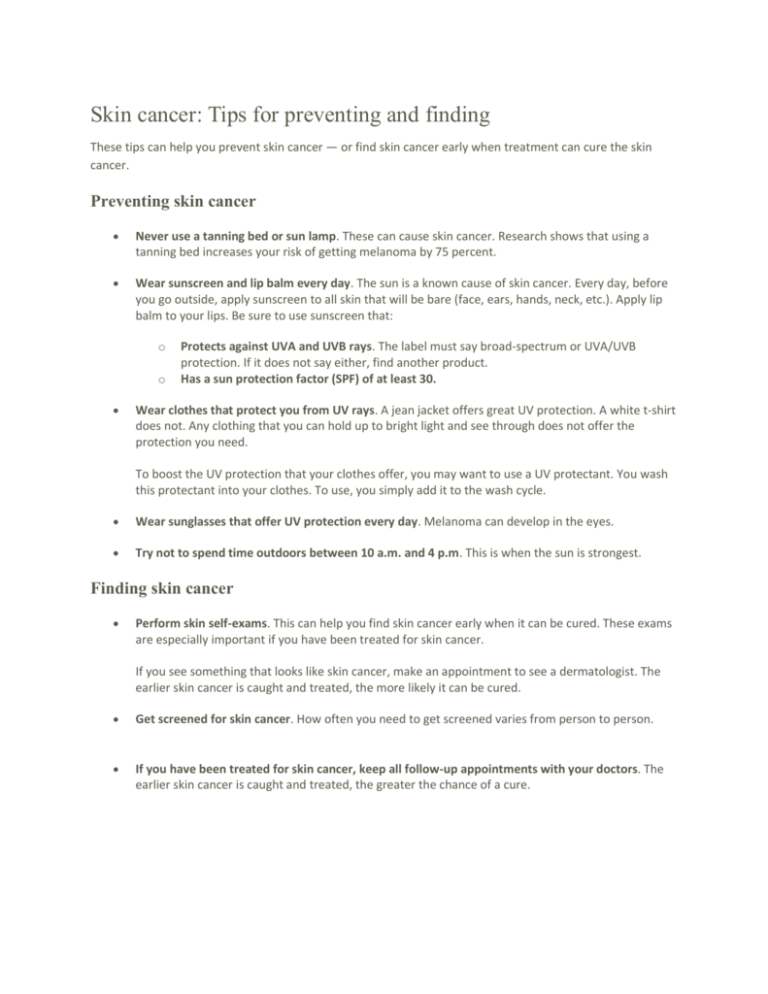
Skin cancer: Tips for preventing and finding These tips can help you prevent skin cancer — or find skin cancer early when treatment can cure the skin cancer. Preventing skin cancer Never use a tanning bed or sun lamp. These can cause skin cancer. Research shows that using a tanning bed increases your risk of getting melanoma by 75 percent. Wear sunscreen and lip balm every day. The sun is a known cause of skin cancer. Every day, before you go outside, apply sunscreen to all skin that will be bare (face, ears, hands, neck, etc.). Apply lip balm to your lips. Be sure to use sunscreen that: o o Protects against UVA and UVB rays. The label must say broad-spectrum or UVA/UVB protection. If it does not say either, find another product. Has a sun protection factor (SPF) of at least 30. Wear clothes that protect you from UV rays. A jean jacket offers great UV protection. A white t-shirt does not. Any clothing that you can hold up to bright light and see through does not offer the protection you need. To boost the UV protection that your clothes offer, you may want to use a UV protectant. You wash this protectant into your clothes. To use, you simply add it to the wash cycle. Wear sunglasses that offer UV protection every day. Melanoma can develop in the eyes. Try not to spend time outdoors between 10 a.m. and 4 p.m. This is when the sun is strongest. Finding skin cancer Perform skin self-exams. This can help you find skin cancer early when it can be cured. These exams are especially important if you have been treated for skin cancer. If you see something that looks like skin cancer, make an appointment to see a dermatologist. The earlier skin cancer is caught and treated, the more likely it can be cured. Get screened for skin cancer. How often you need to get screened varies from person to person. If you have been treated for skin cancer, keep all follow-up appointments with your doctors. The earlier skin cancer is caught and treated, the greater the chance of a cure. The Five Warning Signs of Basal Cell Cancer Frequently, two or more of these features are present in one tumor. In addition, BCC sometimes resembles noncancerous skin conditions such as psoriasis or eczema. Only a trained physician, such as a specialist in diseases of the skin, can decide for sure. If you observe any of the warning signs or some other worrisome change in your skin, consult your physician immediately. 1. A scar-like area that is white, yellow or waxy, and often has poorly defined borders; the skin itself appears shiny and taut. This warning sign may indicate the presence of an invasive BCC that is larger than it appears to be on the surface. 2. An open sore that bleeds, oozes, or crusts and remains open for a few weeks, only to heal up and then bleed again. A persistent, non–healing sore is a very common sign of an early BCC. 3. A reddish patch or irritated area, frequently occurring on the face, chest, shoulders, arms, or legs. Sometimes the patch crusts, and it may also itch. At other times, it persists with no noticeable discomfort. 4. A shiny bump or nodule that is pearly or translucent and is often pink, red, or white. The bump can also be tan, black, or brown, especially in dark-haired people, and can be confused with a mole. 5. A pink growth with a slightly elevated rolled border and a crusted indentation in the center. As the growth slowly enlarges, tiny blood vessels
